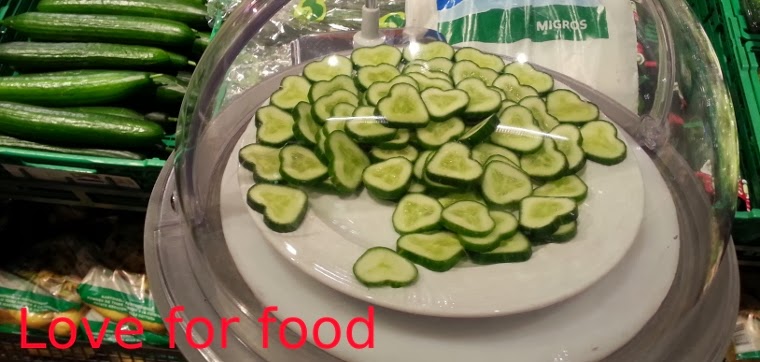Here is a group photo of the ingredients.
We used about 200g of the Korean soba noodles in the center. That was two bundles.
I cooked them for 8 minutes in gently boiling salted water. The recipe says you should toss them with toasted sesame oil after cooking, but I found they turn out less sticky if you add about half of the sesame oil to the boiling water and half of it after cooking and rinsing them under cold water. So I did that and put them into the fridge to let them cool.
Meanwhile, Ben took care of the scallions. He trimmed and washed them,
then he cut them into rings.
I heated about three tablespoons of olive oil in a nonstick frying pan and added the mushrooms.
I went on according to the recipe: after the shiitake had wilted down a bit, I added the white scallion rings and two cloves of garlic.
Yes, I use a garlic press. And yes, a lot of chefs will tell you that the garlic will lose a lot of its flavor when pressed. This is entirely true. But handling a garlic press is so much easier than chopping up the clove with a knife. So, for most of our everyday use, we use the garlic press. I can only think of one dish where I really think the garlic tastes better in thin slices (we tried both).
I also added a good splash (about two to three tablespoons) of soy sauce and let simmer for a few minutes. Then I added two teaspoons of mirin to deglaze and let simmer for about two more minutes, until the contents of the pan looked like this:
We let that cool for a while. Meanwhile, Ben had peeled, halved and sliced the cucumber and peeled, quartered and sliced the avocado.
We used neither yuzu (I looked for fresh yuzu at a large department store today, but no luck - I only found bottled yuzu juice which was due to expire next month) nor lemon, but lime.
Ben found out that the various ingredients of the dish mix best if you add the liquids to the soba noodles before adding the solids. So I mixed the noodles with 3 tablespoons of rice vinegar, the juice from both halves of the lime, and a rather generous teaspoon of Sriracha sauce (the one with the green lid).
Yum! So good in this hot summer!




































